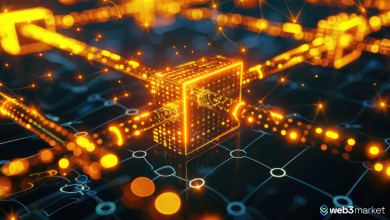
As companies drive to achieve breakthrough results with AI in 2025, operationalization and trust must be attainable imperatives. Scott Zoldi, Chief Analytics Officer at FICO shares his AI and GenAI predictions for the coming year.
Companies Will Figure Out That All AI is Not GenAI
As AI’s golden age settles in, companies will get serious about maximizing the business value of further AI investments. When analyzing the business problems they want to solve, companies will apply their AI experience and learnings to determine which business opportunities are best enabled by GenAI, and which ones are more appropriate for traditional AI techniques and interpretable machine learning. –– In fact, more than 80% of all AI systems in production today are not Generative AI.
Choosing the right AI tools takes data scientists who critically understand the business and operationalization requirements at hand and can assess the relative strengths or weaknesses of AI or GenAI. “Human in the loop” processes will critically evaluate whether a business problem needs deterministic decisioning, interpretable machine learning, auditability, or other deployment requirements. Choosing the correct AI or GenAI path will be key in successful AI investments.
Operationalizing AI is a challenge – but It will get easier
“Operationalization” doesn’t exactly roll off the tongue. But this concept, which means “turning abstract conceptual ideas into measurable observations,” can be systematically achieved when AI and GenAI systems are implemented in a repeatable, measurable way––through an optimized combination of people, process and technology.
Many companies don’t know how to operationalize AI, or where to start. In my role at FICO, I have developed five operationalization principles that always form the framework of any AI deployment.
Accountability and explainability are central to Responsible AI and can be achieved by using immutable blockchain technology to codify every aspect of AI model development. The same AI governance blockchain can be used to define operating metrics and monitor the AI in production, allowing value to be attained outside the data science lab.
Data Domain-specific GenAI use cases will flourish
Companies that are serious about using large language models (LLMs) and other generative techniques in a responsible, value-based way will do so from a foundation of Responsible AI––which starts with mastering your own data. I’ve long held this opinion and am delighted to see that MIT and McKinsey & Co. researchers have empirically found it to be true, stating unequivocally in Harvard Business Review: “For companies to use AI well, they need accurate, pertinent, and well-organized data.”
In 2025, GenAI programs will be based on actively curated data that is relevant to specific business domains. Companies will curate and cleanse data the LLM should be learning from and remove huge amounts of data it shouldn’t. This is a first step of responsible use and achieving business value; training data must be representative of the decisions that will be based on it. Companies will differentiate themselves on their data strategies for LLM creation; after all, an LLM is only a rendering of the data on which it was built.
Companies will “roll their own” small and focused language models
Furthermore, 2025 will see more and more companies building their own small language models (SLMs). We will see a rise in focused language models (FLMs) that can address the most undermining aspect of LLMs—hallucination—with a corpus of specific domain data and knowledge anchors to ensure task-based FLM responses are grounded in truth. These same FLMs will help legitimize Agentic AI applications (Agentic AI relies on a complex ensemble of different machine learning, natural language processing, and automation technologies) that are still at their infancy, but also require laser-focused, task-specific LLMs operating at high degrees of accuracy and control.
Widespread use of FLMs can create another positive result: reducing the environmental impact of GenAI.
According to industry estimates, a single ChatGPT query consumes between 10 and 50 times more energy than a Google search query. At a higher level, the United Nations’ most recent Digital Economy Report suggests that data centers run by Google, Amazon, Meta, Apple and Microsoft (GAMAM) alone were responsible for consuming more than 90 TWh (terawatt-hour, or 1,000 gigawatt-hours [GWh]) of energy), which is more than entire countries like Finland, Belgium, Chile or Switzerland.
As companies look for ways to achieve sustainability goals other than buying carbon credits, FLMs can make a meaningful impact while delivering better results for businesses.
AI trust scores will make it easier to trust GenAI
AI trust scores, such as those associated with FLMs, will make it easier to confidently use GenAI. This secondary, independent, risk-based AI trust score, and strategies based on it, allows GenAI to be operationalized at scale with measurable accuracy.
AI trust scores reflect three things:
- The probability that key contextual data (such as product documentation) the task-specific FLM was trained on is used to provide the answer.
- The AI trust model’s confidence that the FLM’s output is based on enough statistical relevance. LLMs work on probability distributions, and if there’s not enough training data to create a statistically significant distribution or a number of viable alternatives, the AI trust model will not be confident in the answer.
- Alignment around knowledge anchors—that is, alignment with true facts versus data. Truth-versus-data is one of the most tenacious challenges with LLM technology, and AI overall.
AI trust scores can be operationalized in a proper risk-based system, so businesses can decide if they will trust an FLM’s answer––a true operationalization strategy.




